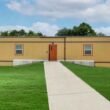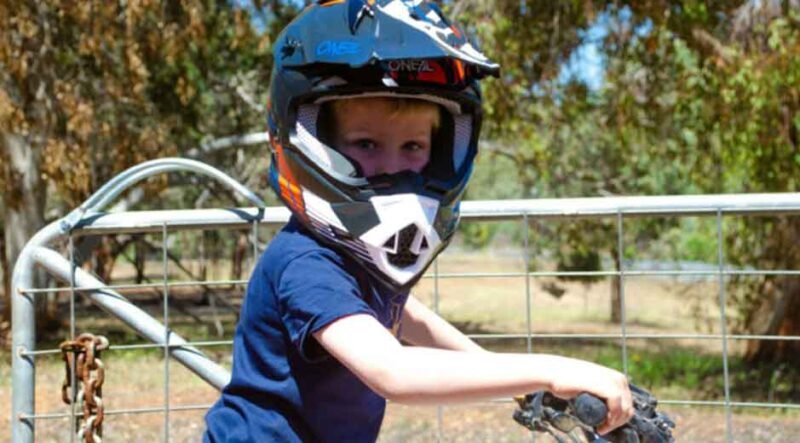Watch children experiencing wheeled toys for the first time, and you’ll witness something that feels almost otherworldly. Their wide-eyed fascination with motion, the tentative first pushes that seem to defy their understanding of physics, the wobbly attempts at balance that look like they’re learning an alien form of locomotion, there’s something wonderfully cosmic about these initial encounters with wheels.
Outdoor play represents crucial developmental territory for children, providing experiences that screens and structured indoor activities simply cannot replicate. When you add wheels to outdoor play, whether bicycles, scooters, skateboards, or motorized options, you amplify both the benefits and the importance of proper guidance
Benefits of Wheeled Outdoor Activities for Kids
Physical Development
Wheeled activities deliver exceptional physical development benefits that static play cannot match. The dynamic nature of moving on wheels challenges children’s bodies in ways that build foundational capabilities supporting all future physical activities.
Coordination and balance improve dramatically through wheeled play. Staying upright while moving requires constant micro-adjustments, your brain receiving sensory input from eyes, inner ear, and body position sensors, then sending corrective signals to muscles dozens of times per second. This feedback loop develops neural pathways supporting coordination across all movement contexts.
Motor skills both gross (large muscle movements) and fine (precise control) develop through wheeled activities. Steering requires fine motor control while pedaling, pushing, or balancing engages large muscle groups. This comprehensive motor development supports athletic abilities, everyday physical tasks, and even fine motor skills like handwriting.
Muscle and bone strength increase through active movement. Weight-bearing activities like cycling, scooting, or skateboarding stress bones in healthy ways that promote density and strength—particularly important during childhood when bone development lays foundations for lifelong skeletal health. Muscles strengthen through repetitive use, building the capacity for more demanding activities as children grow.
Cognitive and Social Growth
Physical activity isn’t separate from cognitive development—they’re deeply interconnected, with movement experiences literally building brain architecture.
Decision-making happens constantly during wheeled play. Children continuously assess situations: Is this path clear? Can I make that turn at this speed? Should I go around or stop? These rapid judgments develop executive function—the mental processes managing attention, working memory, and flexible thinking.
Spatial awareness develops as children navigate environments on wheels. Understanding where your body is in space, predicting trajectories, judging distances, and planning paths all exercise spatial reasoning that transfers to academic areas like mathematics and reading.
Social interaction flourishes during group wheeled activities. Children negotiate rules, take turns, coordinate group games, resolve conflicts, and share excitement. These social experiences build emotional intelligence and interpersonal skills that serve them throughout life.
Emotional Wellbeing
The psychological benefits of wheeled outdoor play deserve equal emphasis alongside physical and cognitive advantages.
Confidence and independence grow as children master challenging skills. Successfully riding without training wheels, learning to skateboard, or controlling a scooter builds self-efficacy—the belief “I can do hard things.” This confidence transfers to academic challenges, social situations, and all areas requiring courage to attempt difficult tasks.
Stress reduction occurs naturally during vigorous outdoor play. Physical activity releases endorphins, reduces stress hormones, and provides mental breaks from pressures children increasingly face. The joy and freedom of wheeled play creates positive associations with physical activity that can last lifetimes.
Positive relationship with movement established during childhood influences adult activity patterns. Children who experience physical activity as fun rather than obligation are more likely to maintain active lifestyles as adults, protecting long-term health.
Choosing the Right Wheeled Equipment
Types of Wheeled Toys
Various wheeled options suit different ages, interests, and skill levels. Understanding distinctions helps match equipment to your child’s developmental stage and interests.
Bicycles remain classics for good reason—they provide excellent exercise, develop coordination and balance, and offer practical transportation as children age. Start with balance bikes for toddlers (no pedals, teaching balance first), then progress to training wheels, and eventually two-wheeled bikes as skills develop.
Scooters work well for younger children or those not yet ready for bicycles. Push scooters develop balance and coordination while being more intuitive than bikes for many children. Three-wheeled scooters offer extra stability for beginners.
Skateboards challenge older children ready for more advanced balance skills. They build core strength, coordination, and body awareness while offering creative expression through tricks and style.
Kids’ Electric Motorbikes provide exciting experiences for children fascinated by motorized vehicles. These battery-powered options allow kids to experience the thrill of riding while parents control speed limits and monitor safety. Electric motorbikes for kids build confidence and coordination while introducing basic vehicle operation concepts in controlled, safe environments.
Features to Consider
Quality and appropriate design significantly impact both safety and enjoyment.
Adjustability extends equipment lifespan and ensures proper fit. Adjustable seat heights on bicycles or scooters accommodate growth, while bikes should allow children to place feet flat on ground when seated for stability and confidence.
Durable materials withstand the inevitable crashes, drops, and rough handling children deliver. Steel frames offer durability though added weight, while quality aluminum provides strength with lighter weight. Avoid cheap plastics that crack or break easily.
Weight considerations affect usability—lighter equipment proves easier for children to handle, maneuver, and recover if tipped. However, extremely light equipment may sacrifice durability, so balance these factors based on your child’s size and strength.
Safety Gear and Precautions
Essential Protective Equipment
Proper safety gear dramatically reduces injury severity during inevitable falls and accidents. Make protective equipment non-negotiable from the start—it’s far easier to establish helmet-wearing as standard practice than to introduce it after habits form.
Helmets represent the single most important safety item. Head injuries carry serious consequences, but helmets reduce severe head injury risk by roughly 85%. Choose helmets specifically designed for the activity (bike helmets differ from skateboard helmets), ensure proper fit (snug but comfortable, level on head, straps forming a “V” under ears), and replace helmets after any significant impact even if damage isn’t visible.
Knee and elbow pads protect joints during falls. These become particularly important for skateboarding or when children are learning new skills on any wheeled equipment. Pads should fit snugly without restricting movement.
Footwear matters more than many realize. Closed-toe shoes with good tread provide stability and protection. Avoid sandals, flip-flops, or shoes with wheels (like Heelys) when using other wheeled equipment.
Setting Safety Rules
Clear, consistent rules create safe play environments while still allowing appropriate risk that develops capabilities.
Speed limits appropriate to skill level and environment prevent accidents. Young or beginning riders need slower speeds until control improves. Different environments warrant different speeds—open parks allow faster riding than crowded paths or areas near streets.
Designated play areas keep children away from traffic and other hazards. Identify safe locations for wheeled play—parks with paved paths, empty parking lots (with permission), quiet residential streets with minimal traffic, or backyard spaces.
Supervision requirements depend on age and skill level. Young children require direct, constant supervision. As children mature and demonstrate good judgment, supervision can become less intensive, but parents should remain nearby and periodically check on activities.
Fun Outdoor Activities With Wheeled Toys
Skill-Building Exercises
Structured skill development makes learning safer and more effective while remaining fun through variety and achievable challenges.
Balance and agility drills using simple equipment teach fundamental skills. Set up cone weaving courses that children navigate on their wheeled toys, gradually spacing cones closer as skills improve. Create “stop zones” where children must come to complete stops within marked areas, developing brake control and judgment.
Gradual progression prevents frustration and builds confidence. Start with very simple challenges, celebrating successes before increasing difficulty. This builds positive associations with practice while developing genuine capabilities.
Group Games and Races
Social play adds motivation and fun while building skills through friendly competition.
Relay races where teams compete create excitement while practicing starts, stops, and transitions. Designate turning points where riders must navigate around markers before returning to tag teammates.
Tag games adapted for wheeled play combine cardiovascular exercise with skill practice. “Freeze tag” where tagged players must stop until freed by teammates works particularly well. Establish clear boundaries and ensure adequate space preventing collisions.
Timed challenges where children try to beat their own previous times (rather than competing directly against others) build motivation without excessive competitiveness that might encourage unsafe risk-taking.
Maintenance and Storage Tips for Wheeled Toys
Equipment Care
Regular maintenance keeps equipment safe and extends lifespan, making it a worthwhile investment of time.
Cleaning after muddy or dusty rides prevents buildup that damages components. Simple washing with mild soap and water, followed by drying, suffices for most equipment. Lubricate chains and moving parts after cleaning.
Tire maintenance includes keeping proper inflation (check sidewalls for recommended pressure) and inspecting for wear or damage. Under-inflated tires make riding harder and damage rims; over-inflation increases puncture risk.
Seasonal maintenance before extended storage (winter in cold climates) includes thorough cleaning, checking all components, and storing properly to prevent weather damage.
Safe Storage
Proper storage prevents damage, extends equipment life, and reduces safety hazards.
Indoor storage in garages, sheds, or basements protects equipment from weather while keeping it accessible. Wall hooks or stands organize equipment while preventing tripping hazards from toys left on floors.
Weather protection matters even for outdoor storage. Covers protect equipment from rain, sun (which degrades plastics and rubber), and temperature extremes.
Security prevents theft while also ensuring unsupervised younger siblings can’t access older children’s equipment unsafely. Locks or storage in areas young children cannot reach protects both equipment and safety.
Encouraging Responsibility and Independence
Teaching Safety Awareness
Building safety knowledge empowers children to make good decisions rather than simply following rules without understanding.
Traffic rules appropriate to their activity level should be taught explicitly. This might include:
- Always riding on right side of paths
- Looking both directions before crossing any road
- Using hand signals to indicate turns
- Yielding to pedestrians
- Stopping at intersections
Hazard recognition helps children identify and avoid dangers. Point out risks during rides—wet leaves that reduce traction, gravel that affects braking, potholes or cracks that could catch wheels, areas where cars might not see riders. Training with Kids Electric Motorbikes can reinforce these lessons in controlled settings where parents can demonstrate proper responses to various situations before children encounter them independently.
Path sharing etiquette teaches considerate behavior. Children should learn to alert pedestrians when passing (“on your left”), give pedestrians right of way, avoid blocking paths, and ride at appropriate speeds for crowded areas.
Developing Routine Habits
Consistent habits build safety into automatic behaviors rather than requiring constant conscious attention.
Pre-ride checks should become standard routine: Is my helmet properly fastened? Are my brakes working? Are my tires inflated? This checklist takes moments but prevents many problems.
Proper mounting and dismounting techniques prevent falls and equipment damage. Children should learn to start and stop safely, including how to catch themselves if balance is lost.
Self-discipline around rules develops through consistent enforcement combined with explanation. When children understand why rules exist—helmets prevent head injuries, speed limits allow control, staying in safe areas prevents car collisions—they’re more likely to follow rules even when unsupervised.
Consistent practice builds skills and confidence. Regular riding develops capabilities far more effectively than occasional marathon sessions. Short, frequent practice sessions work better than infrequent long ones, particularly for younger children.
Outdoor Play in Different Environments
Parks and Community Spaces
Public spaces offer excellent wheeled play opportunities while requiring awareness of shared space responsibilities.
Safe area identification considers multiple factors. Look for:
- Smooth, well-maintained pavement
- Adequate space away from traffic
- Good visibility (can you see your child from rest areas?)
- Appropriate user density (not so crowded that collisions become likely)
- Designated bike or multipurpose paths when available
Public etiquette matters for everyone’s enjoyment and safety. Teach children to ride considerately, passing safely, controlling speed in crowded areas, being friendly to other path users, and following posted rules and signs.
Group activity guidelines when multiple children ride together include maintaining safe distances (preventing collisions if someone stops suddenly), staying together as a group (preventing anyone from getting separated or lost), and designating an adult to lead and another to follow (bracketing the group).
Home and Backyard Play
Private spaces offer controlled environments ideal for practice and skill development.
Mini tracks created with chalk, cones, or other markers provide structured practice areas. Even small yards accommodate simple courses that children can circuit repeatedly, building skills through repetition.
Obstacle courses using household items create engaging challenges. Cardboard boxes, pool noodles, or plastic bottles become obstacles for weaving or barriers to navigate around.
Private spaces let children practice freely without public space pressures, building confidence before venturing to parks or paths.
Conclusion
Wheeled outdoor adventures offer children exceptional opportunities for physical, cognitive, and emotional development while building independence and confidence that extends far beyond the immediate activity. From traditional bicycles to modern electric motorbikes for kids, these experiences create memories and capabilities that shape how children relate to physical activity, challenge, and the outdoors throughout their lives.
The key to successful wheeled adventures lies in balancing freedom with appropriate guidance, allowing children to experience the joy and occasional minor scrapes of adventurous play while protecting them from serious harm through proper equipment, safety gear, and supervision. When children learn that adventure and safety aren’t opposing forces but complementary elements of enriching experience, they develop judgment that serves them across all life domains.









